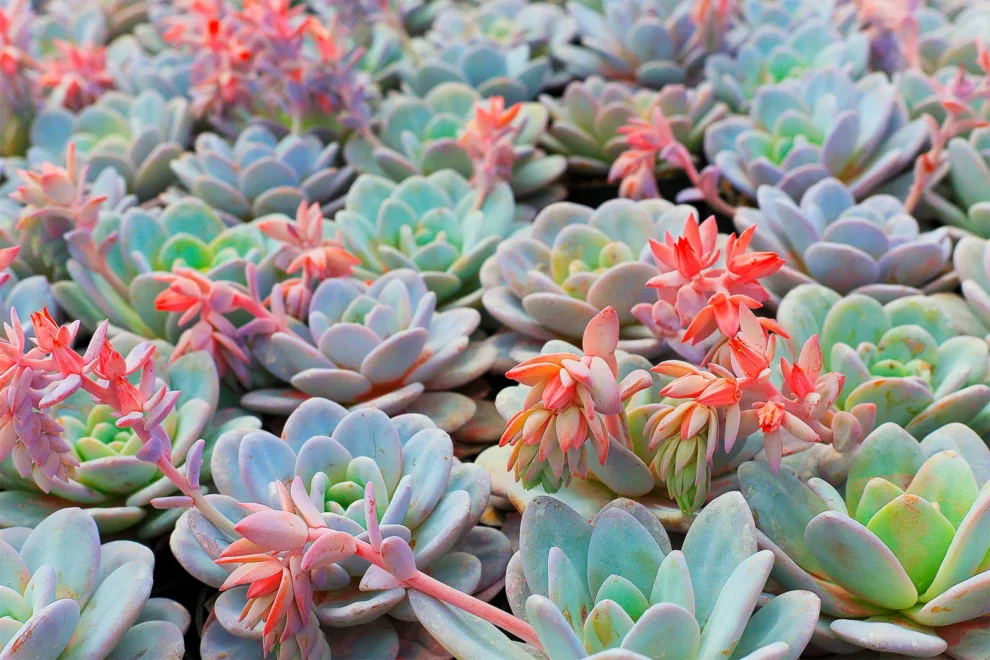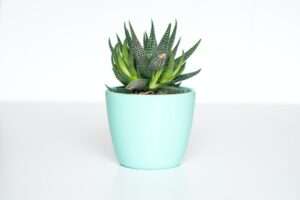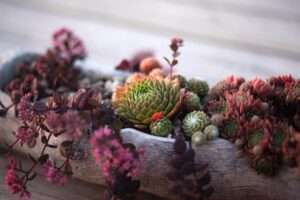Succulents have become increasingly popular in recent years, both in gardening and home decor. These unique plants are known for their ability to store water in their leaves, stems, and roots, making them highly adaptable to arid environments. Succulents come in a wide variety of shapes, sizes, and colors, making them a versatile choice for any garden or indoor space.
One of the main benefits of growing succulents is their low maintenance nature. They require minimal watering and can thrive in a variety of environmental conditions. This makes them an ideal choice for busy individuals or those who may not have a green thumb. Additionally, succulents are known for their ability to purify the air by removing toxins and releasing oxygen, making them a great addition to any indoor space.
Understanding the Growth Patterns of Succulents
To understand how succulents grow, it is important to understand their anatomy. Succulents have thick, fleshy leaves and stems that allow them to store water. This adaptation helps them survive in arid environments where water is scarce. The leaves of succulents are covered in a waxy coating called a cuticle, which helps prevent water loss through evaporation.
Succulents store water in their leaves, stems, and roots. The leaves are the primary storage organs and can hold large amounts of water. The stems also play a role in water storage and can become swollen or plump when filled with water. The roots of succulents are shallow and spread out to absorb as much water as possible when it rains.
Factors that Affect the Size of Succulents
The size of succulents can vary greatly depending on several factors. Genetics play a significant role in determining the size of a succulent. Some species naturally grow larger than others, while certain hybrids have been bred to be smaller or more compact.
Environmental conditions also play a role in the size of succulents. Succulents that are grown in optimal conditions with plenty of sunlight, well-draining soil, and moderate temperatures are more likely to grow larger than those that are grown in less ideal conditions.
Nutrient availability is another factor that can affect the size of succulents. Like all plants, succulents require certain nutrients to grow and thrive. If a succulent is not receiving the necessary nutrients, it may not reach its full potential size.
Miniature Succulents: The Smallest Varieties
Miniature succulents are a popular choice for those who have limited space or want to create a small-scale garden. These tiny plants come in a variety of shapes and colors and can be easily displayed in small pots or terrariums.
Some examples of miniature succulents include Haworthia cooperi, Crassula perforata, and Sedum pachyphyllum. These plants typically grow to be no more than a few inches tall and have compact, tightly packed leaves.
Miniature succulents thrive in bright, indirect light and well-draining soil. They should be watered sparingly, allowing the soil to dry out between waterings. These small plants can be displayed in a variety of creative ways, such as in miniature fairy gardens or as part of a larger succulent arrangement.
Medium-Sized Succulents: Finding the Perfect Fit for Your Home
Medium-sized succulents are a great option for those who want a larger plant without the commitment of caring for a giant succulent. These plants can range in size from a few inches to several feet tall and come in a variety of shapes and colors.
Some examples of medium-sized succulents include Aloe vera, Echeveria elegans, and Kalanchoe blossfeldiana. These plants are often used as focal points in gardens or as statement pieces in indoor spaces.
When choosing a medium-sized succulent, it is important to consider the space available and the amount of light it will receive. Some succulents prefer bright, indirect light, while others can tolerate lower light conditions. It is also important to choose a pot or container that allows for proper drainage to prevent root rot.
Large Succulents: Creating Dramatic and Impressive Displays
Large succulents can create dramatic and impressive displays in both indoor and outdoor spaces. These plants can range in size from several feet to several meters tall and can be used as focal points or as part of a larger succulent garden.
Some examples of large succulents include Agave americana, Yucca rostrata, and Aeonium arboreum. These plants have bold, architectural forms and can add a touch of drama to any space.
Designing with large succulents can be a challenge due to their size and weight. It is important to choose a sturdy pot or container that can support the weight of the plant. Large succulents also require ample space to grow and should be placed in an area where they will not be crowded by other plants.
Giant Succulents: Exploring the Limits of Size
For those who want to push the limits of size, giant succulents are the way to go. These massive plants can reach heights of several meters and can create a truly awe-inspiring display.
Some examples of giant succulents include Pachypodium lamerei, Euphorbia ingens, and Cereus peruvianus. These plants have thick, woody stems and can take several years to reach their full size.
Growing giant succulents in the garden requires ample space and well-draining soil. These plants also require plenty of sunlight and should be protected from frost and extreme temperatures. Due to their size, giant succulents can be difficult to move once they are established, so it is important to choose their planting location carefully.
The Tallest Succulent in the World: Awe-Inspiring Heights
The tallest succulent in the world is the Puya raimondii, also known as the Queen of the Andes. This impressive plant can reach heights of up to 15 meters and is native to the high-altitude regions of the Andes Mountains in South America.
The Puya raimondii is a slow-growing plant that takes several decades to reach its full height. It produces a tall, branching inflorescence that can reach up to 10 meters in height and is covered in bright yellow flowers.
The Puya raimondii can be found in its natural habitat in Bolivia, Peru, and Chile. It is a protected species and is considered endangered due to habitat loss and over-harvesting.
Cultivating and Caring for Large Succulents
Cultivating and caring for large succulents requires some special considerations. These plants have specific soil requirements and need to be watered and fertilized properly to ensure their health and growth.
Large succulents require well-draining soil that allows excess water to flow away from the roots. This can be achieved by adding perlite or sand to a standard potting mix. It is also important to choose a pot or container with drainage holes to prevent water from pooling around the roots.
Watering large succulents can be tricky, as they require more water than smaller succulents but still need to be allowed to dry out between waterings. It is best to water deeply, allowing the water to soak into the soil, and then allow the top few inches of soil to dry out before watering again.
Fertilizing large succulents should be done sparingly, as these plants are adapted to nutrient-poor environments. A balanced, slow-release fertilizer can be applied once or twice a year to provide the necessary nutrients.
Pruning and propagating large succulents can be challenging due to their size and weight. It is best to prune these plants in early spring before new growth begins. Cuttings can be taken from healthy, mature plants and rooted in well-draining soil to create new plants.
Conclusion: Embracing the Diversity of Succulents in Your Garden
In conclusion, succulents offer a wide range of sizes and shapes, making them a versatile choice for any garden or indoor space. From miniature succulents that can fit in the palm of your hand to giant succulents that reach heights of several meters, there is a succulent for every space and every gardener.
By understanding the growth patterns of succulents and the factors that affect their size, you can choose the right succulent for your space and provide it with the care it needs to thrive. Whether you prefer small, delicate plants or large, dramatic displays, succulents offer endless possibilities for creativity and beauty in your garden. So embrace the diversity of succulents and let these unique plants bring life and color to your home.
If you’re curious about how big succulents can actually get, you’ll definitely want to check out this informative article on girlsgist.com. It provides a complete guide on the topic, giving you all the information you need to know about the growth potential of these popular plants. From tiny miniatures to towering giants, you’ll discover the incredible range of sizes that succulents can reach. So, if you’re a succulent enthusiast or simply interested in learning more about these fascinating plants, make sure to give this article a read!

















Add Comment